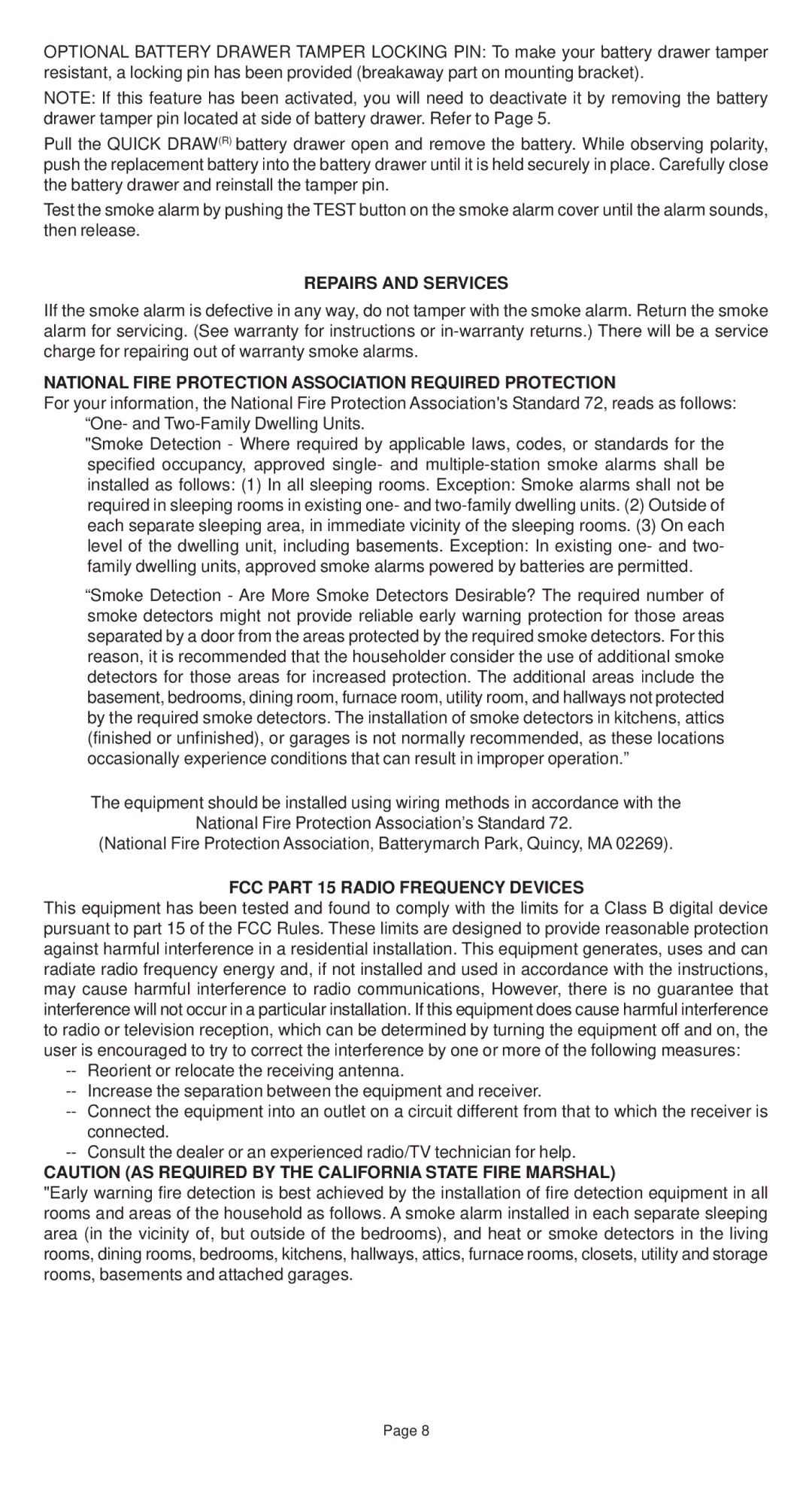3304L, 3304, 3895, 3895L specifications
Universal Security Instruments (USI) has made a prominent mark in the home security and safety industry with its innovative smoke and carbon monoxide (CO) detectors. Among their standout products are the USI 3895L, 3895, 3304L, and 3304 models, each designed with user-friendly features, advanced technologies, and exceptional reliability.The USI 3895L is a hardwired smoke and CO detector that features a built-in battery backup, ensuring unwavering protection even during power outages. This model includes a voice alarm system that announces the specific type of danger, whether it be smoke or carbon monoxide, allowing users to respond appropriately. Its continuous self-checking functionality enhances reliability by routinely testing the unit's circuits, battery, and sensors.
The USI 3895, while similar in many ways to the 3895L, emphasizes simplicity and efficiency. This battery-operated model provides a compact design without sacrificing performance. It features a sleek appearance, making it an aesthetic addition to any home, while still offering robust smoke and CO detection capabilities. The 3895 also includes a loud alarm and test/silence button for quick and easy functioning.
Moving on to the USI 3304L, this model is an all-in-one smoke and CO alarm that caters to families and businesses alike. Like the 3895L, it comes with a hardwired setup and a battery backup. The 3304L is particularly praised for its photoelectric smoke sensing technology which minimizes false alarms caused by cooking smoke and steam. This technology increases response times for smoldering fires, giving users valuable time to react.
Lastly, the USI 3304 is a more accessible variant within the same series, designed as a battery-operated smoke and CO detector. Retaining many advanced features of the 3304L, this model is compact and versatile, suitable for various spaces within a home or office. It comes equipped with an LED indicator for operational status and an easy-to-read user manual, ensuring ease of use and installation.
In summary, Universal Security Instruments' 3895L, 3895, 3304L, and 3304 models each provide essential life-saving features with cutting-edge technology. From voice alarms and photoelectric sensing technology to reliable battery backup options, USI delivers robust solutions for fire and carbon monoxide safety. Employing these detectors can significantly enhance home safety while providing peace of mind for families and property owners alike.
